APLNR Polyclonal Antibody
- Catalog No.:YT0265
- Applications:WB;IHC;IF;ELISA
- Reactivity:Human;Rat;Mouse;
- Target:
- APLNR
- Fields:
- >>Neuroactive ligand-receptor interaction;>>Apelin signaling pathway
- Gene Name:
- APLNR
- Protein Name:
- Apelin receptor
- Human Gene Id:
- 187
- Human Swiss Prot No:
- P35414
- Mouse Swiss Prot No:
- Q9WV08
- Immunogen:
- The antiserum was produced against synthesized peptide derived from human AGTRL1. AA range:141-190
- Specificity:
- APLNR Polyclonal Antibody detects endogenous levels of APLNR protein.
- Formulation:
- Liquid in PBS containing 50% glycerol, 0.5% BSA and 0.02% sodium azide.
- Source:
- Polyclonal, Rabbit,IgG
- Dilution:
- WB 1:500 - 1:2000. IHC 1:100 - 1:300. IF 1:200 - 1:1000. ELISA: 1:10000. Not yet tested in other applications.
- Purification:
- The antibody was affinity-purified from rabbit antiserum by affinity-chromatography using epitope-specific immunogen.
- Concentration:
- 1 mg/ml
- Storage Stability:
- -15°C to -25°C/1 year(Do not lower than -25°C)
- Other Name:
- APLNR;AGTRL1;APJ;Apelin receptor;Angiotensin receptor-like 1;G-protein coupled receptor APJ;G-protein coupled receptor HG11
- Observed Band(KD):
- 43kD
- Background:
- This gene encodes a member of the G protein-coupled receptor gene family. The encoded protein is related to the angiotensin receptor, but is actually an apelin receptor that inhibits adenylate cyclase activity and plays a counter-regulatory role against the pressure action of angiotensin II by exerting hypertensive effect. It functions in the cardiovascular and central nervous systems, in glucose metabolism, in embryonic and tumor angiogenesis and as a human immunodeficiency virus (HIV-1) coreceptor. Two transcript variants resulting from alternative splicing have been identified. [provided by RefSeq, Jul 2009],
- Function:
- function:Receptor for apelin coupled to G proteins that inhibit adenylate cyclase activity. Alternative coreceptor with CD4 for HIV-1 infection; may be involved in the development of AIDS dementia.,similarity:Belongs to the G-protein coupled receptor 1 family.,tissue specificity:Widely expressed in the brain, in glial cells, astrocytes and neuronal subpopulations, as well as in the spleen, thymus, ovary, small intestine and colon.,
- Subcellular Location:
- Cell membrane . After exposure to apelin (APLN), internalized from the cell surface into an endosomal recycling compartment, from where it is recycled to the cell membrane (By similarity). After exposure to apelin receptor early endogenous ligand (APELA), internalized from the cell surface into an endosomal recycling compartment, from where it is recycled to the cell membrane (PubMed:25639753). .
- Expression:
- Expressed in heart, brain, kidney, stomach, spleen, thymus, lung, ovary, small intestine and colon, adipose tissues and pancreas (PubMed:8294032, PubMed:25639753). Expressed in glial cells, astrocytes and neuronal subpopulations (PubMed:8294032). Expressed in embryonic (ESCs) and induced (iPSCs) pluripotent stem cells (PubMed:25639753).
- June 19-2018
- WESTERN IMMUNOBLOTTING PROTOCOL
- June 19-2018
- IMMUNOHISTOCHEMISTRY-PARAFFIN PROTOCOL
- June 19-2018
- IMMUNOFLUORESCENCE PROTOCOL
- September 08-2020
- FLOW-CYTOMEYRT-PROTOCOL
- May 20-2022
- Cell-Based ELISA│解您多样本WB检测之困扰
- July 13-2018
- CELL-BASED-ELISA-PROTOCOL-FOR-ACETYL-PROTEIN
- July 13-2018
- CELL-BASED-ELISA-PROTOCOL-FOR-PHOSPHO-PROTEIN
- July 13-2018
- Antibody-FAQs
- Products Images
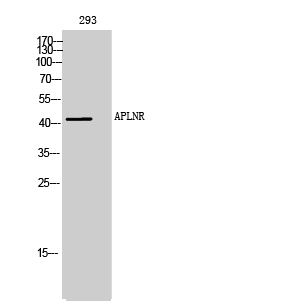
- Western Blot analysis of 293 cells using APLNR Polyclonal Antibody
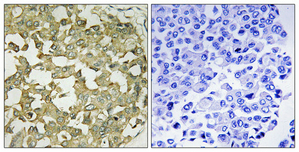
- Immunohistochemical analysis of paraffin-embedded Human breast cancer. Antibody was diluted at 1:100(4° overnight). High-pressure and temperature Tris-EDTA,pH8.0 was used for antigen retrieval. Negetive contrl (right) obtaned from antibody was pre-absorbed by immunogen peptide.
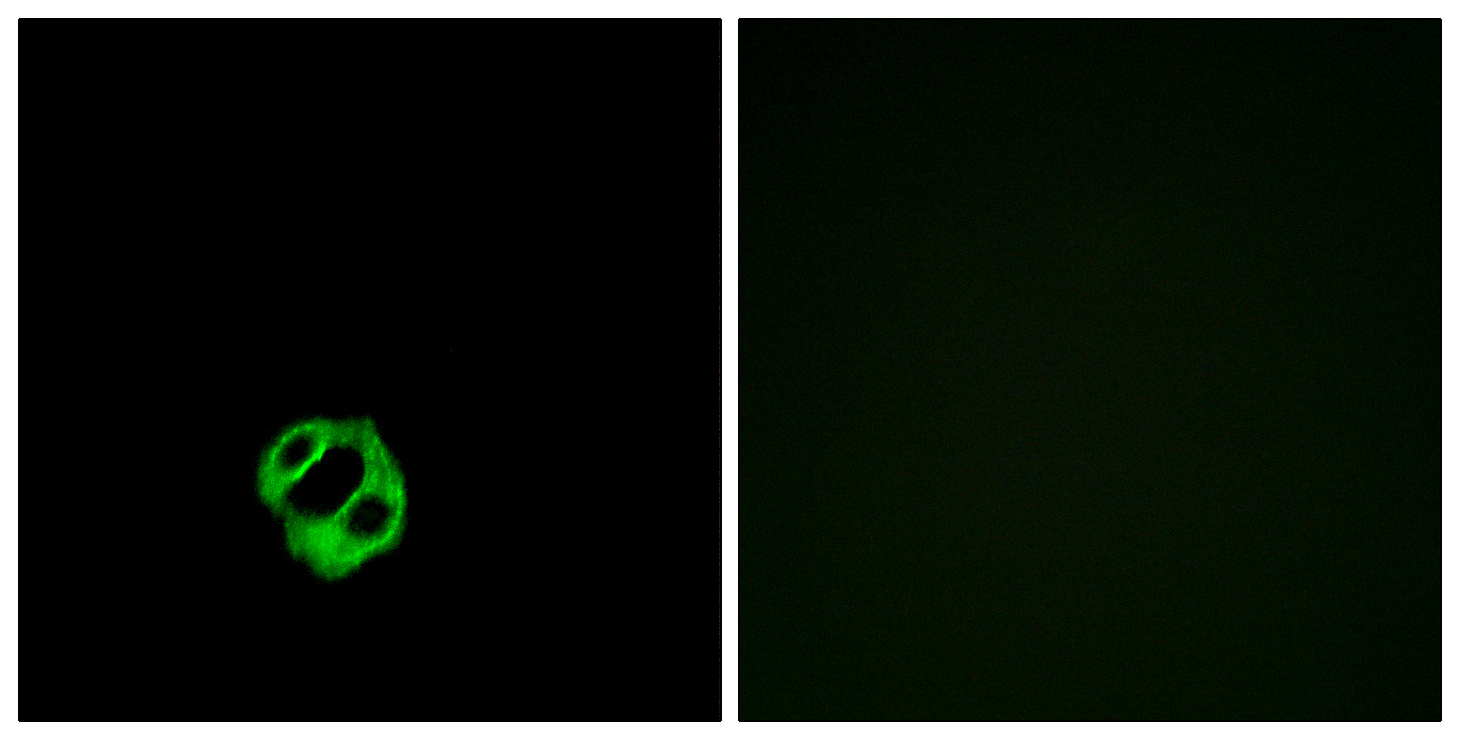
- Immunofluorescence analysis of MCF7 cells, using AGTRL1 Antibody. The picture on the right is blocked with the synthesized peptide.
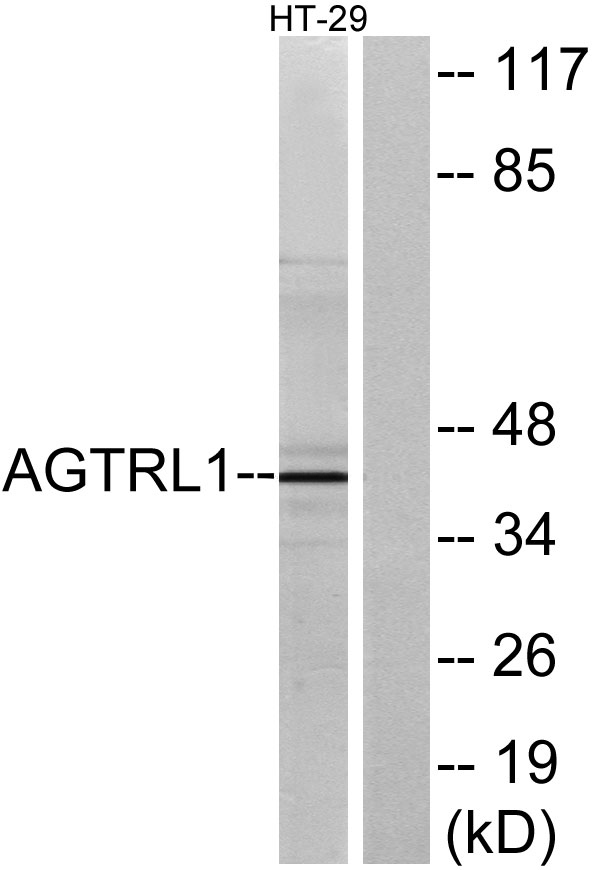
- Western blot analysis of lysates from HT-29 cells, using AGTRL1 Antibody. The lane on the right is blocked with the synthesized peptide.
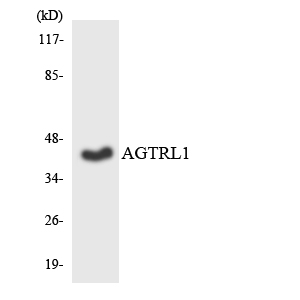
- Western blot analysis of the lysates from HT-29 cells using AGTRL1 antibody.



